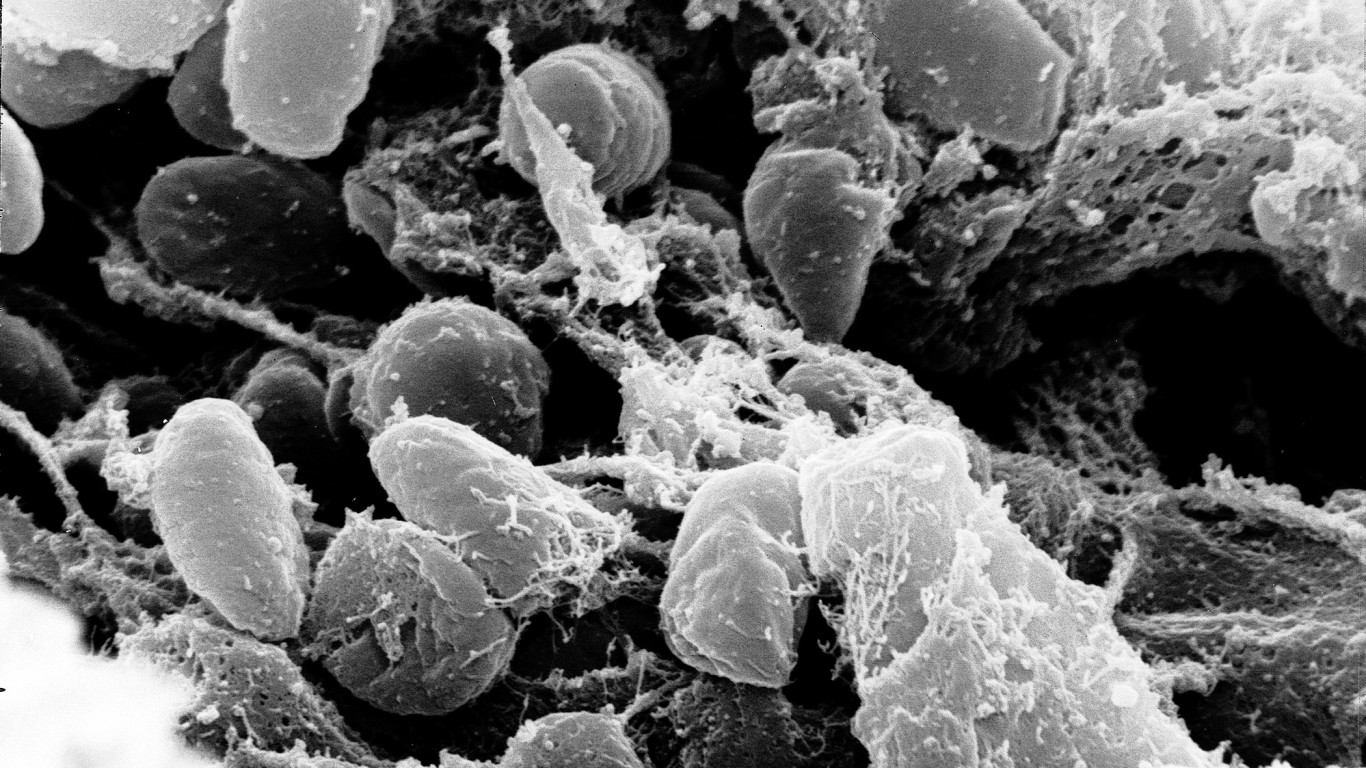
10. Epsilon toxin of Clostridium perfringens
> CDC priority: Second highest priority
> Lethality if untreated: Rare
The epsilon toxin, or ETX, is a poison that causes enterotoxemia, a deadly disease in some domesticated animals, like sheep. Due to its potency, ETX is considered a potential biological weapon. ETX is one of the toxins of type B and type D strains of C. perfringens, a relatively common bacteria that is behind an estimated 1 million cases of food poisoning in the U.S. each year.

9. Brucellosis (Brucella species)
> CDC priority: Second highest priority
> Lethality if untreated: Deaths in 2% of cases
Humans can become infected with brucellosis after coming into contact with or by ingesting raw milk or undercooked meat of an infected animal – typically sheep, cattle, goats, pigs, or dogs. Symptoms include fever, sweats, malaise, anorexia, headache, and muscle or joint pain. The disease is treatable with antibiotics, though recovery may take months.
Due to its potential for airborne transmission, it has been heavily researched as a potential biological weapon. In the 1950s, before America’s biological weapons program was dismantled, the U.S. military developed bombs that contained the pathogens that cause brucellosis. The pathogen was favored by the U.S. due to its ability to debilitate with a low mortality rate.

8. Tularemia (Francisella tularensis)
> CDC priority: Highest priority
> Lethality if untreated: Moderate
Tularmeria is a disease that is particularly deadly for animals like rabbits, hares, and rodents. Humans can also be infected through tick and deer fly bites, or contact with infected animals, or by ingesting contaminated water or inhaling contaminated aerosols. Symptoms can be mild and typically include a fever and range from skin ulcers and pneumonia to a sore throat and headache – though the disease can also be fatal.
The disease is difficult to diagnose but is treatable with antibiotics. There have been fewer than 400 cases reported annually in the U.S. since the 1960s. Because of the disease’s potential for use as a biological weapon, the Department of Defense in 2020 awarded researchers at the University of Texas at San Antonio and Lovelace Respiratory Research Institute with an $18 million contract to develop a vaccine.

7. Smallpox (Variola major virus)
> CDC priority: Highest priority
> Lethality if untreated: High to moderate â¥30% lethal
For thousands of years, the smallpox virus posed a deadly risk to humans. Early symptoms include fever and headache, followed by rashes and scab formations. However, since a vaccine was developed and widely adopted, the World Health Assembly declared the diseases eradicated in 1980.
Though no naturally occurring smallpox cases have been reported since 1977, smallpox remains a biological weapon threat. Smallpox was used as a weapon in the French and Indian Wars and was cultivated by the Soviet Union in the 20th century and could potentially be used again as Americans are no longer routinely vaccinated — and for those who are, vaccines do not offer lifelong immunity.
6. Plague (Yersinia pestis)
> CDC priority: Highest priority
> Lethality if untreated: High unless treated within 12â24 hours (pneumonic)
The plague killed millions of people across Europe in the Middle Ages. Though it is still contractible today through bites from infected rodent fleas, it is treatable with antibiotics – if caught early.
The CDC acknowledges that the plague could be used as a biological weapon in a number of scenarios, including an aerosol attack releasing tiny droplets in the air in a crowded place. Early symptoms include fever, headache, weakness, and chills. During World War II, Japan experimented with weaponizing the plague, and in the First World War, Germany reportedly attempted to spread the plague in St. Petersburg to weaken Russia.






